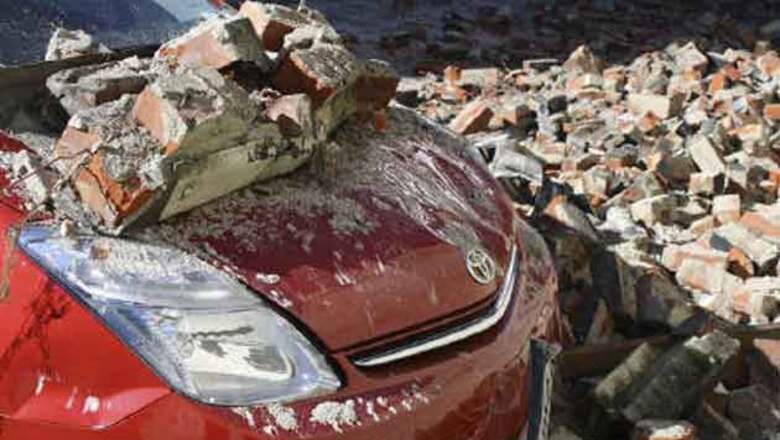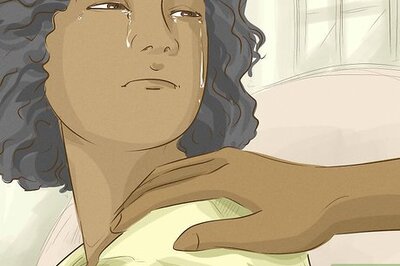
views
Wellington: Authorities declared a state of emergency after a major earthquake hit New Zealand's second biggest city, Christchurch, early on Saturday, bringing down power lines, ripping up roads and wrecking building facades, but authorities reported no deaths.
A formal civil defence state of emergency was imposed to coordinate recovery operations in the city of around 350,000 after facades collapsed into streets, crushing cars and blocking roads.
The earthquake had a magnitude of 7.4 and a depth of 10 kms (6 miles), hitting the South Island city and a large surrounding area of farms at around 4.35 AM local time (1635 GMT Friday).
The city's hospital said two men had been admitted with serious injuries, one hit by a falling chimney and the other cut by glass. It had also treated a few other people with broken bones, cuts and grazes.
"I think we've been extremely lucky as a nation that there's been no fatalities; we're blessed actually," Civil Defence Minister John Carter told reporters, adding that he expected the cost to the economy would be substantial.
Prime Minister John Key, who has a sister living in the city, was heading to the city with senior government officials.
"I think it is going to take quite some time before we know how big the bill is," Key told Television NZ.
Christchurch city and the neighbouring small towns bore the full force of the quake, which did considerable damage to infrastructure.
"The damage is immense, it's something that has affected every family, every household...the hit on our infrastructure, the pipes that deliver the water, the waste water, the bridges, the power supplies...has been very significant," Christchurch mayor Bob Parker told reporters.
Police said there were minor instances of looting, which had been quickly contained. In the suburbs many houses had broken windows, toppled chimneys, cracked walls and items thrown off shelves, with some streets and footpaths subsiding.
Power was out over a large area of the city and surrounding region, but was being progressively restored after safety checks.
Authorities were preparing to bring in water in large tankers because pumping stations were out of action and pipes broken.
Rural Epicentre
The small farming community of Darfield, around 20 kms (12 miles) west of Christchurch, was near the quake's epicentre.
The principal of the primary school there said the quake, which threw him out of bed, was terrifying.
"Our china cabinet has crashed, pictures are off the wall, anything high up has come down and the cat has gone. He is probably still heading south," Markham McCullen told the NZ Press Association.
GNS Science, the New Zealand government seismological agency, revised the quake's magnitude to 7.1 from an original 7.4. The US Geological Survey initially reported it at 7.4 but later revised its figure to 7.0.
Christchurch airport was shut as the runway and facilities were checked, and the railway network and bridges throughout the region were also being checked for damage.
The quake was felt as a long rolling motion lasting up to 40 seconds. The area was continuing to feel aftershocks as strong as magnitude 5.3.
The quake was among the 10 strongest recorded in New Zealand, which sits between the Pacific and Indo-Australian tectonic plates, and records around 14,000 earthquakes a year, of which around 20 top magnitude 5.0.
The last fatal quake was in 1968 when an earthquake measuring 7.1 killed three people on the South Island's West Coast.

















Comments
0 comment